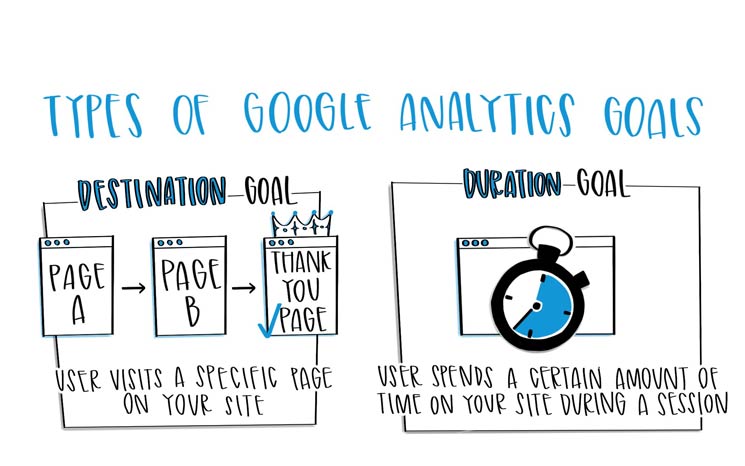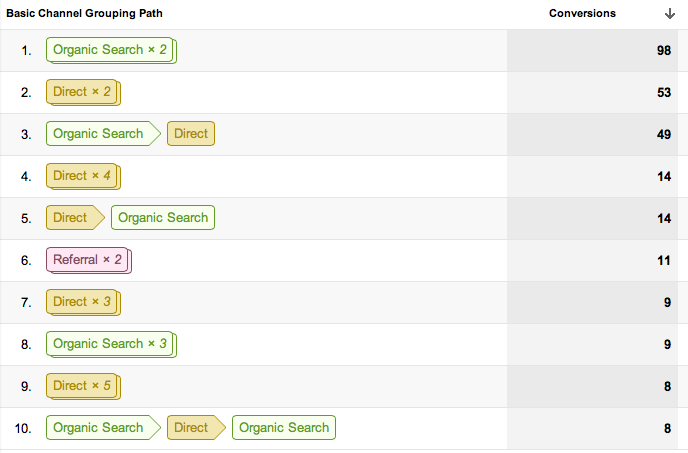Exploring What Data Is Google Analytics Goals Unable to Track
Exploring What Data Is Google Analytics Goals Unable to Track
Blog Article
Demystifying Google Analytics Limitations: Uncover What Information Goals Can not Track
In the world of electronic analytics, Google Analytics stands as a powerful tool that gives beneficial understandings right into site performance and user actions. Among its capacities, there exist constraints that commonly go unnoticed. Understanding what Google Analytics can not track is crucial for a detailed grasp of data analysis and decision-making procedures. From the details of customer communication with dynamic web content to the intricacies of cross-device user trips, these restrictions dropped light on locations that may remain covered from standard analytics point of views. By unraveling these restrictions, a clearer picture arises, enabling for even more enlightened approaches and fine-tuned understandings into customer interaction and conversions.

Customer Interaction With Dynamic Material
Customer interaction with dynamic material plays an important duty in understanding individual habits on websites and enhancing the total user experience. Dynamic material refers to elements on a page that can change without the need for a full page reload. This includes interactive components such as pop-ups, sliders, forms, and videos that reply to user actions in real-time. By tracking individual communications with dynamic content, web site proprietors can gain important insights right into user interaction, choices, and actions.
Google Analytics uses different tools to track individual interactions with vibrant material, such as event tracking and virtual pageviews. Occasion monitoring permits you to monitor details customer activities, like clicking a switch or enjoying a video clip, offering data on just how customers interact with vibrant aspects. Online pageviews can be used to track communications that do not cause a brand-new page load, giving a thorough sight of customer interaction with dynamic content. By assessing this information, internet site proprietors can make educated decisions to boost individual experience and drive conversions.
Cross-Device Individual Journeys
How can modern-day analytics devices track the complex courses individuals take across multiple gadgets in their on-line trips? Cross-device user trips offer a considerable obstacle for tracking and analyzing user behavior precisely. As users connect with sites or applications using different tools such as mobile phones, tablet computers, and desktop computers, it becomes crucial to comprehend how they move between these systems to maximize customer experience properly.
Google Analytics encounters constraints in tracking cross-device user journeys as a result of personal privacy problems and technological restraints - what data is google analytics goals unable to track. While it can provide insights into individual devices' interactions, tracking a seamless user journey across multiple devices remains an obstacle. This limitation can result in incomplete information and fragmented customer understandings, making it tough for services to produce a unified view of the customer trip
To resolve this concern, organizations can use sophisticated analytics devices that supply cross-device monitoring capabilities, permitting them to gain a more holistic understanding of customer actions. By leveraging these tools, companies can link the void in tracking cross-device user journeys and enhance their digital techniques for a seamless individual experience.
Offline Conversions and Attribution
As businesses browse the difficulties of tracking cross-device user trips, another crucial aspect to consider is the realm of offline conversions and acknowledgment in the realm of data analytics. While Google Analytics gives beneficial insights into on the internet user actions, it falls short when it involves tracking conversions that happen offline. This limitation postures a considerable difficulty for businesses that have both online and offline sales networks.
Offline conversions, such as purchases made in physical shops or through phone call facilities, are vital to comprehending the complete consumer trip. Without the capacity to connect these offline conversions to specific online communications, businesses may struggle to properly determine the impact of their digital advertising initiatives.
To address this space, organizations can check out alternative options such as incorporating CRM systems with online analytics tools or using unique discount codes that can be mapped back to online campaigns. By connecting the void between online and offline information, businesses can acquire an extra thorough understanding of their consumers' behavior and enhance their total marketing techniques.
Individual User Identification
In the world of information analytics, the capacity to precisely identify private users across different on the internet touchpoints is a vital obstacle for visit site services seeking to customize and enhance their advertising techniques. While Google Analytics gives valuable understandings right into customer actions and interactions, it falls short in enabling the recognition of details people due to privacy issues and technical limitations. Google Analytics uses unique identifiers such as cookies to track individual sessions and habits, however these do not correspond to identifying individual customers in a personal feeling.

Data From Secure Pages
Regardless of the enhancing prevalence of safe and secure pages on internet sites, getting data from these encrypted sources offers a special challenge for digital analytics systems like Google Analytics. Secure web pages, suggested by HTTPS in the link, encrypt information exchanged between the individual's browser and the web site's web server to make sure personal privacy and safety. While this encryption is essential for securing delicate information, it likewise poses restrictions for tracking user habits and celebration analytics information.
Google Analytics faces challenges in gathering detailed details from protected pages because of the security procedures in location. Because of this, certain information points such as reference resources, keyword searches, and also some customer interactions might not be totally captured when users access an internet site through a safe link. This restriction can influence the precision and efficiency of the information evaluation, bring about gaps in comprehending individual actions and choices on secure pages.
To navigate this difficulty, electronic experts might require to explore alternative tracking methods or leverage other devices particularly created to collect understandings from safe and secure web pages. By adapting strategies to fit these constraints, organizations can still acquire beneficial analytics despite the constraints presented by encrypted connections.
Verdict
In final thought, Google Analytics has constraints in tracking individual link communication with dynamic content, cross-device individual journeys, offline conversions, specific customer identification, and data from protected web pages. Regardless of its beneficial understandings, Google Analytics may not provide a full image of individual involvement across different touchpoints.
Customer interaction with vibrant content plays an important duty in understanding individual behavior on web sites and optimizing the general customer experience. By tracking user interactions with vibrant content, web site proprietors can acquire useful insights right into customer engagement, choices, and actions.
Google Analytics uses one-of-a-kind identifiers such as cookies to track individual sessions and actions, but these do not correspond to recognizing individual users in an individual sense.
As a result, specific information factors such as recommendation resources, keyword searches, and even some individual communications might not be totally recorded when individuals access a website through a safe link.In verdict, Google Analytics has limitations in tracking user communication with vibrant material, cross-device individual trips, offline conversions, individual customer identification, and data from safe web pages.
Report this page